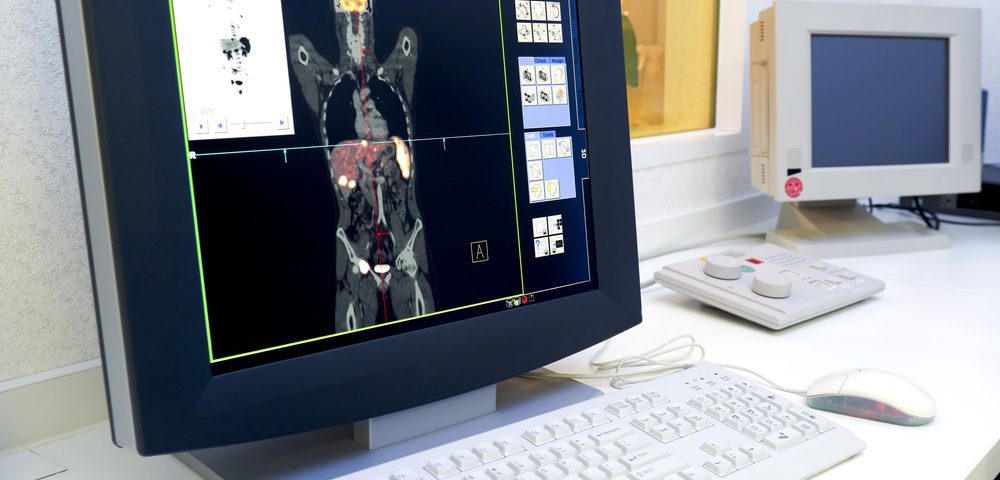Long-term use of androgen deprivation therapy (ADT) can make prostate cancer lesions difficult or impossible to see on some imaging scans, even in tumors that continue to grow, a new study shows.
Its scientists recommended that patients with aggressive cancer undergo scans before starting with ADT.
The study, “Impact of long-term androgen deprivation therapy on PSMA ligand PET/CT in patients with castration-sensitive prostate cancer,” was published in the European Journal of Nuclear Medicine and Molecular Imaging.
Imaging of recurrent prostate cancer with conventional techniques such as computed tomography (CT) or magnetic resonance imaging has long been a challenge.
In 2011, researchers developed a technique known as 68Ga-PSMA-11 PET/CT that targeted the prostate-specific membrane antigen (PSMA) – a protein that is overexpressed in most aggressive prostate cancers. That technique allowed physicians to scan for recurrent cancer.
Men with hormone-sensitive prostate cancer often undergo ADT, which led physicians to question how ADT affects PSMA imaging.
Studies have shown that short-term ADT can increase PSMA expression in castration-sensitive prostate cancer cells, leading to greater sensitivity of the imaging technique.
But the long-term effects of ADT on PSMA expression and tumor visibility have not been investigated in detail. So researchers did a study to analyze long-term ADT’s effect on tumor visibility and detection using PSMA PET/CT scans.
The retrospective study included 1,704 patients who underwent PSMA PET/CT scans to detect prostate cancer. Among this group, 306 were scanned at least twice, but only 10 had started ADT between the two scans and had achieved a clinical response to ADT – meaning their PSA levels were back to normal. Researchers then focused on these 10 patients.
The study did not pinpoint how many lesions that were not showing up on scans remained in patients. Rather, the researchers noted that some lesions were growing but the amount of radioactive tracer dye they were taking up was decreasing, making them less visible on scans.
The results show that long-term and effective ADT significantly decreases tracer uptake on PSMA PET/CT scans, the researchers said.
“ADT of short duration may increase PSMA expression, while long-term ADT probably has the opposite effect,” they wrote. “Continuous long-term ADT significantly reduces the visibility of castration-sensitive [prostate cancer] on PSMA PET/CT.”
They concluded, “If the objective is visualization of the maximum possible extent of disease, we recommend referring patients for PSMA PET/CT before starting ADT.”

